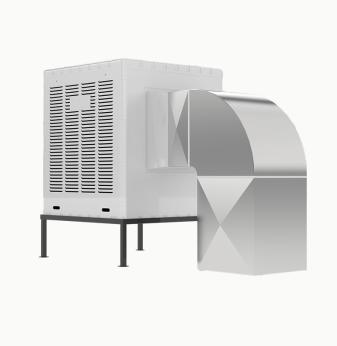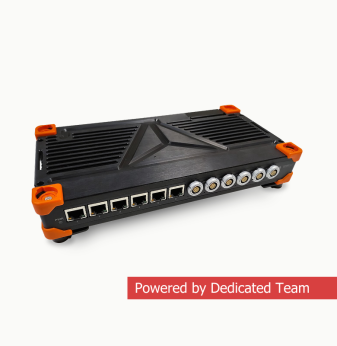Post-Quantum Security for Industrial Embedded Controllers

Industrial electronics are on the verge of a security paradigm shift. The arrival of practical quantum computing will eventually render traditional cryptographic methods like RSA and ECC vulnerable, threatening long-lived embedded systems that rely on them. As a result, the industry is rapidly moving toward quantum-resistant embedded controllers — devices that integrate post-quantum cryptography (PQC) into their firmware, hardware, and communication stacks. These controllers promise resilience against quantum attacks while maintaining performance, energy efficiency, and interoperability with legacy systems.
This article explores how PQC is entering industrial electronics, what algorithmic families and hardware optimizations are emerging, and how design teams can prepare embedded systems for the post-quantum era.
Why quantum resistance matters for industrial embedded systems
Unlike consumer devices that can be replaced frequently, industrial embedded systems — PLCs, gateways, control units, and sensors — often operate for 10–20 years. That long lifecycle makes them uniquely exposed to future quantum threats. Even if quantum computers capable of breaking RSA-2048 don’t appear immediately, “store-now, decrypt-later” attacks mean adversaries can capture encrypted data today and decrypt it years later.
Sectors such as energy, transportation, and manufacturing depend on these devices for critical operations and cannot afford retroactive data exposure or compromised firmware updates. Quantum-resistant controllers therefore represent a long-term investment in digital trust — embedding cryptography that remains secure even as computational paradigms evolve.
Key technologies behind quantum-resistant controllers
1. Post-quantum cryptographic algorithms (PQC)
PQC relies on mathematical problems that quantum algorithms cannot easily solve. NIST’s post-quantum standardization (finalized between 2024–2026) highlights four major algorithm families now migrating into embedded hardware:
- Lattice-based (CRYSTALS-Kyber, Dilithium): efficient, secure, suitable for constrained devices.
- Hash-based (SPHINCS+): extremely secure, though slower for frequent signature generation.
- Code-based (Classic McEliece): robust but large key sizes limit embedded use.
- Multivariate (Rainbow, GeMSS): strong theoretical base but practical adoption still limited.
For embedded designers, lattice-based cryptography is emerging as the dominant choice due to its balance of efficiency, security, and small memory footprint.
2. Hybrid cryptography for transitional systems
Industrial controllers must remain backward-compatible with existing infrastructure. Hybrid cryptography combines traditional algorithms (RSA/ECC) with PQC schemes, ensuring secure interoperability. During 2026–2030, most embedded systems will use dual key exchanges — one classical, one quantum-safe — to hedge against both legacy and future threats.
3. Hardware acceleration for PQC
PQC computations are more complex than RSA or ECC, requiring polynomial arithmetic and matrix operations. To maintain performance, chip vendors are embedding dedicated PQC accelerators within secure MCUs or SoCs. These accelerators handle lattice operations efficiently, minimizing latency and energy consumption. Expect SoCs at Embedded World 2026 to showcase integrated PQC coprocessors, targeting both industrial and automotive safety controllers.
4. Secure key storage and hardware roots of trust
Quantum resistance is meaningless without secure key management. Controllers now integrate hardware roots of trust (HRoT) to safeguard PQC private keys. Combined with tamper-resistant non-volatile memory and on-chip entropy sources, HRoT ensures that even if communication layers evolve, the hardware base remains trustworthy.
5. Firmware signing and OTA updates in the PQC era
Future-proof controllers must authenticate firmware updates using post-quantum signatures. Lattice-based signing (Dilithium) offers a strong balance of verification speed and compactness for OTA workflows. Manufacturers are beginning to issue hybrid-signed firmware — one classical, one PQC signature — to ensure validity before and after the quantum transition.
Design and implementation considerations for embedded engineers
- Algorithm selection: Choose PQC families suitable for constrained hardware (Kyber/Dilithium). Consider key size, speed, and available memory.
- Hardware-software co-design: Use controllers with hardware acceleration or FPGA logic blocks supporting modular arithmetic and vector operations.
- Power and timing optimization: PQC is computationally heavy; efficient implementation requires hardware-level scheduling and low-power arithmetic units.
- Integration with communication stacks: Adapt TLS, MQTT, OPC UA, and industrial IoT protocols for hybrid or PQC-based key exchange.
- Firmware maintenance: Establish long-term update frameworks that allow cryptographic agility — the ability to switch algorithms as standards evolve.
Industrial use cases
- Smart factories and IIoT: Secure PLCs and gateways managing data integrity across distributed sensor networks.
- Energy infrastructure: PQC-secured controllers for smart grids, substation automation, and EV charging infrastructure, resistant to long-term key exposure.
- Transportation systems: In-vehicle controllers using PQC-secure OTA updates and V2X communication.
- Defense and aerospace: Long-lifecycle embedded systems requiring decades of cryptographic validity.
Challenges in PQC adoption
- Resource constraints: Embedded controllers have limited flash, RAM, and compute power; PQC algorithms often demand more.
- Standardization flux: Although NIST finalized several algorithms, implementation guidelines for industrial protocols remain in progress.
- Ecosystem maturity: Toolchains, SDKs, and libraries are still adapting; hybrid testing environments are necessary.
- Performance vs. longevity trade-offs: Overly heavy algorithms may reduce responsiveness or increase cost in constrained systems.
- Certification and interoperability: Industrial systems must pass safety and cybersecurity audits — PQC adds new layers to certification complexity.

Roadmap: what’s next for quantum-safe embedded electronics
The long operational lifetime of industrial systems makes early transition critical. Engineers deploying devices today must ensure cryptographic agility — the ability to upgrade to PQC without hardware replacement.
- 2026–2027: Early adoption phase — hybrid PQC controllers appear in industrial gateways and secure MCUs.
- 2028–2030: Standardization and cost optimization — PQC accelerators become standard in secure SoCs.
- 2030+: Full migration — industrial electronics rely exclusively on quantum-resistant encryption and signature schemes.
AI Overview: Quantum-Resistant Embedded Controllers
Quantum-resistant embedded controllers combine post-quantum cryptography and hardware roots of trust to secure industrial and IoT systems beyond the limitations of RSA and ECC.
Key Applications: industrial automation controllers, IIoT gateways, automotive safety ECUs, smart grid devices, long-lifecycle embedded systems.
Benefits: protection against future quantum attacks, long-term data confidentiality, secure OTA updates, hardware-level trust, and cryptographic agility.
Challenges: computational overhead, ecosystem readiness, standardization gaps, and integration into constrained hardware environments.
Outlook: by 2030, PQC-enabled controllers will be the default in critical infrastructure, enabling decades of secure operation across industrial and automotive domains.
Related Terms: post-quantum cryptography, lattice-based encryption, hybrid key exchange, hardware root of trust, secure MCU, quantum-safe firmware signing.
Our Case Studies








